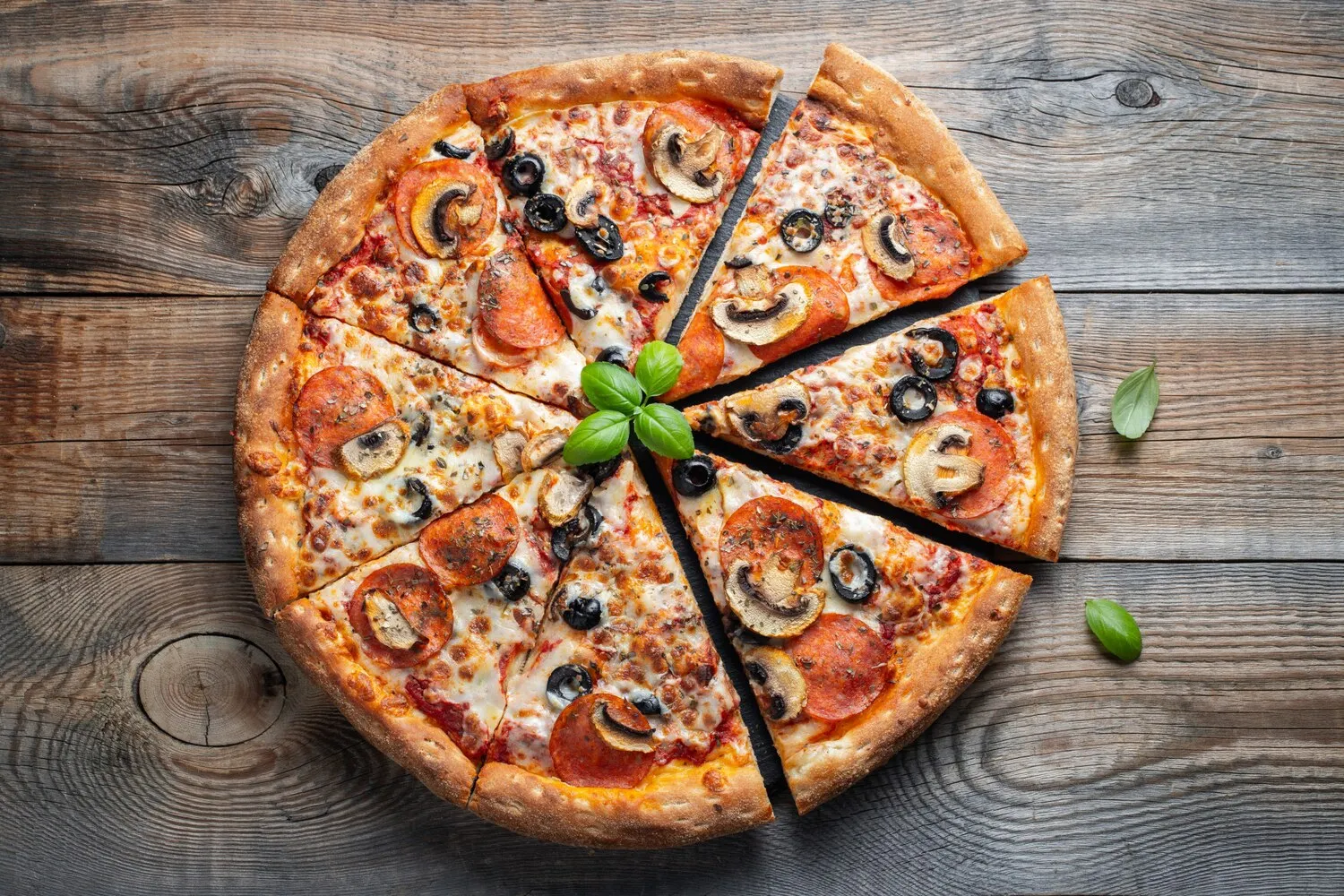
Pizza
Based on reviews, Pims is known for its pizza. Specific types aren't readily available, but it's a popular choice.
Nutrition Facts
* The % Daily Value (DV) tells you how much a nutrient in a serving of food contributes to a daily diet. 2,000 calories a day is used for general nutrition advice.
Pizza's history can be traced back to ancient civilizations, with flatbreads topped with various ingredients being common in cultures like the Greeks and Egyptians. However, the modern pizza as we know it originated in Naples, Italy, in the 18th or early 19th century as a simple, affordable food for the poor.
Pizza is more than just a dish; it's a cultural icon, representing family, sharing, and celebration. Its global popularity has led to regional variations and adaptations, but its core essence remains a symbol of comfort and enjoyment.
Family Meal
Pizza is often enjoyed as a family meal, promoting togetherness and shared experiences. Ordering or making pizza at home is a common tradition.
Social Gathering
Pizza is a popular choice for parties, sporting events, and other social gatherings due to its easy portability and shareability.
Regional Variations
Different regions around the world have developed their own unique pizza styles, reflecting local ingredients and culinary preferences. Examples include New York-style, Chicago deep-dish, and Neapolitan pizza.
Pizza is a symphony of flavors, where the savory dough base meets the tangy tomato sauce, creamy cheese, and a variety of toppings offering a wide range of tastes and textures.
The foundation of pizza flavor is the yeasty, slightly chewy dough, often enhanced with olive oil and herbs. Tomato sauce provides acidity and sweetness, balanced by the richness of mozzarella cheese. Common toppings like pepperoni offer spice and saltiness, while vegetables such as mushrooms, peppers, and onions contribute earthiness and sweetness. The overall flavor profile can be adjusted to be sweet, savory, spicy, or a combination, depending on the ingredients used.
Dough Preparation
Allow ample time for the dough to rise properly. A slow rise develops better flavor and texture. Consider using high-quality flour and fresh yeast for optimal results.
Sauce Application
Use a light hand when applying tomato sauce. Too much sauce can make the crust soggy. Consider using a homemade sauce for a richer flavor.
Oven Temperature
Bake pizza at a high temperature (450-500°F) to achieve a crispy crust and melted cheese. A pizza stone or steel can help distribute heat evenly.
Explore additional Pizza dishes and restaurants
Explore PizzaDiscover top dining spots and culinary experiences in Bolzano.
Explore BolzanoLearn more about the food culture, restaurant scene, and culinary heritage of Italy.
Explore Italy